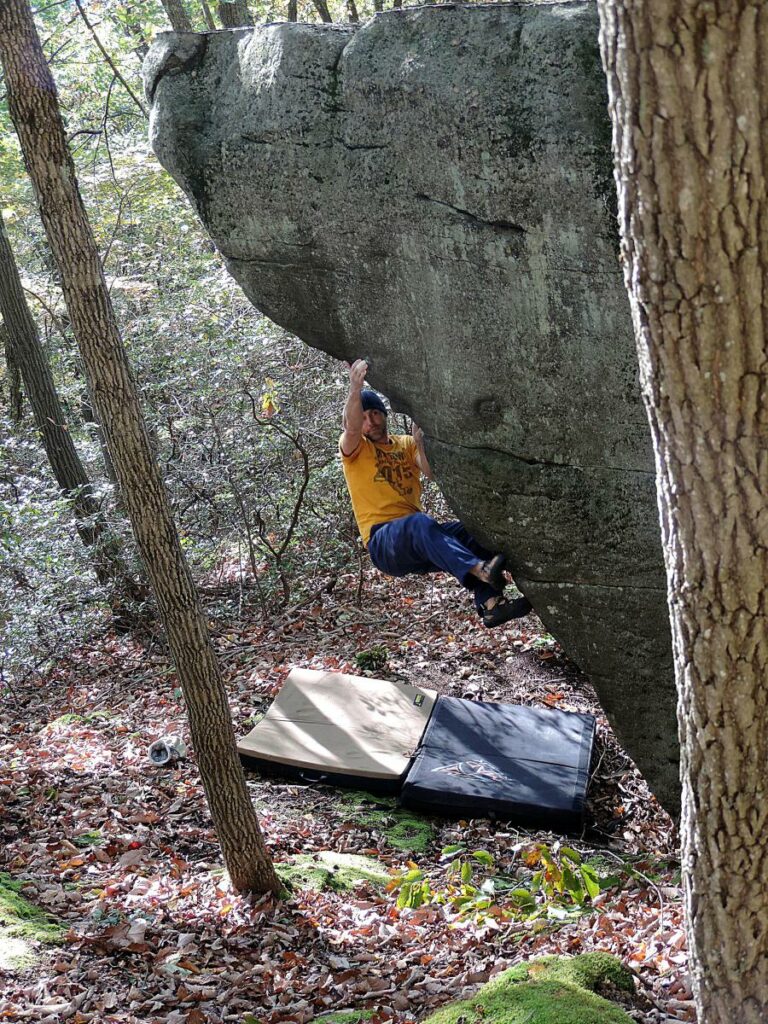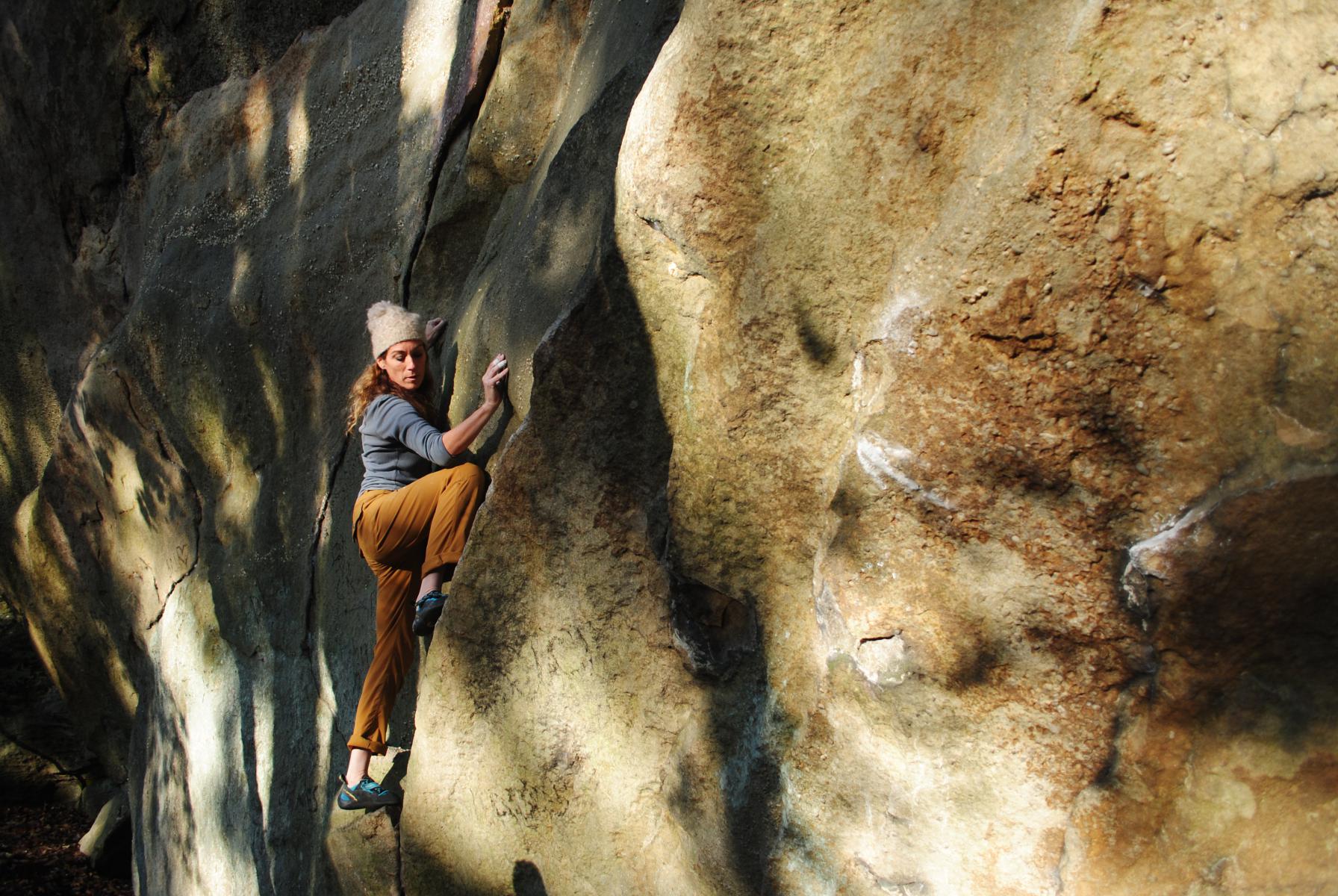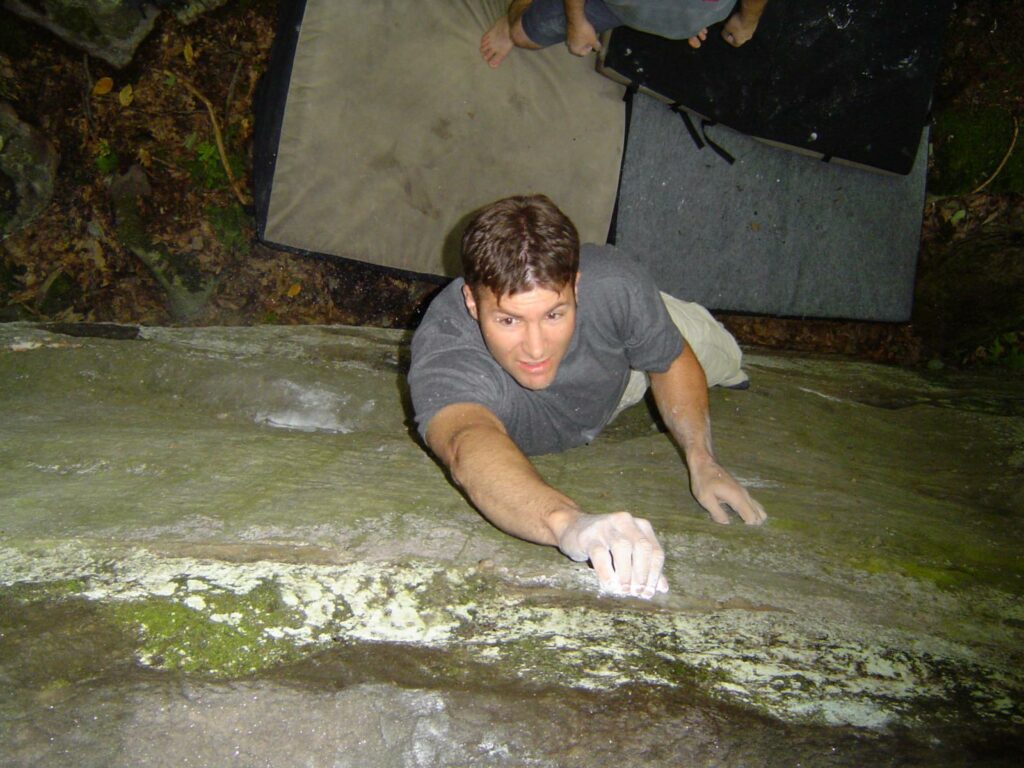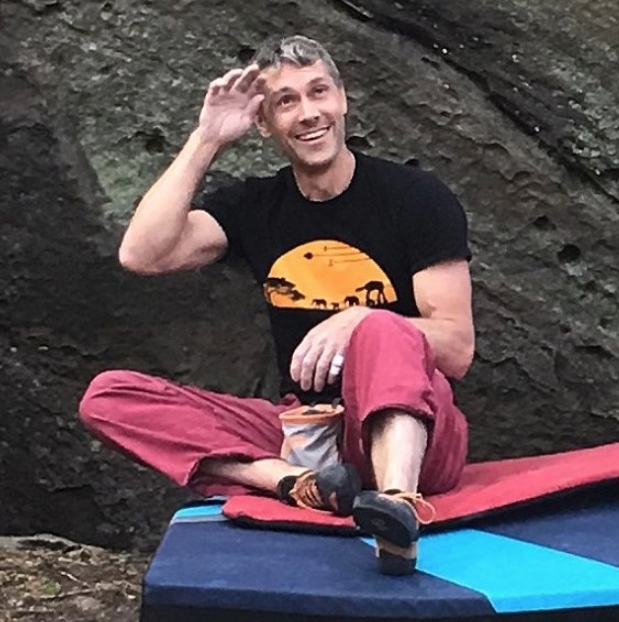Pioneering the Forgotten: The adventure of rock climbing
By: Dana Harrington
For over two decades I’ve been wandering up and down hillsides, wading through thickets of mountain laurel and multiflora roses, hoping to discover something inspiring to climb. With no trails to guide me, there is an intense feeling of exploration–venturing into the unknown. It’s exciting and wild.
Early on in my climbing, I didn’t have access to a climbing gym. There wasn’t a local climbing community. I knew three or four others who climbed occasionally, but I spent most of my time with one guy, my first climbing partner, Terry. Terry and I spent countless hours exploring the woods. We were motivated by a desire for adventure and to challenge ourselves. Terry knew of a couple of rock outcroppings from his childhood that whet our appetites. However, we quickly found ourselves wanting more, and we became adept in the use of topographic maps and aerial photos to sniff out fresh rocks to climb. It was an exhilarating game of identifying potential crags and adventuring into the woods to see what we could find. More often than not, we would leave the woods tired, sore, and empty-handed. We routinely discovered rocks that were not particularly climbable. Sometimes the rock was too friable. Often, the rock was overgrown with moss and lichen.

There were occasions that the rock was clean and tall but featureless, and if not impossible to climb, it was too difficult for us. Yes, there were times when we would find solid, clean rocks with great lines to climb, but even when we came up empty-handed, the adventure was real. We were exploring beyond the reach of guides and guidebooks. We weren’t in the air-conditioned comfort of a climbing gym. There were no colored holds to mark the way, or wall-to-wall mats to protect us. We were in the wild where mother nature is not so concerned with making sure your climbing experience is pleasant, clean, and safe. It was fantastic!
As much as I was enjoying my adventures at home, I also wanted to travel. I wanted to go to where other climbers were. Across the country there were a variety of well-known areas and I remember being very excited to travel to these “destinations” and explore the larger world of climbing. Back then there were several places that had guidebooks to help people find popular routes and boulders to climb. Climbing pop culture had introduced me to places like Yosemite, Smith Rock, Bishop, and El Potrero Chico. I can’t count the number of trips I’ve taken over the years. For me, guidebooks were essential. Without them, these climbing areas would’ve been virtually inaccessible. I am very thankful for the climbing pioneers who discovered these areas and those who took the time to write and publish guidebooks so that I could climb in this shared world without the mountain of effort that had come before me.

Local climbers exploring at Rimrock in the Allegheny National Forest in the PA Wilds. Photos by Dana Harrington.
Fast forward twenty years. The proliferation of climbing gyms, route development, and guidebooks has ushered in a new age of climbing. Our sport is growing. Our community is growing. By and large this has been positive. Here in our corner of the PA Wilds we finally have the infrastructure to grow a climbing community. For so many years, climbing partners were few and far between. We now have a local gym where we can climb year round. Plus, the guidebook to the boulders at Rimrock Overlook has brought the larger climbing community to our backyard. It’s easier than ever to get connected. However, there is a downside. As more areas are uncovered and traffic increases, there is less wilderness for climbers to exercise their wanderlust. Part of what has always attracted me to the sport is the ability to venture to unknown areas and unearth something new. Climbing developers and guidebook authors have opened up a world of climbing for the masses. However, there is something to be said for leaving the area undocumented for the next adventurous soul to discover. We don’t need to publish everything. I’m certain that I was not the first climber to explore here in the Allegheny National Forest (ANF). However, those who came before me left no trace, which allowed me to have my own pioneering experience.

But if we don’t share everything, are we being exclusive? The idea of secret climbing areas has been a point of contention amongst climbers. On the whole, climbers tend to be fantastically inclusive, but that does not demand paving a path to every rock. There is a balancing act at play here. I would’ve missed out on a world of climbing if it weren’t for the breadcrumbs left by those who came before me, and the guidebook to the boulders at Rimrock has been good for our little corner of the climbing world. However, as our sport continues to grow, we must be aware of the impact we are having. It is important to remember that wilderness is a limited resource. There are more climbers now than ever and we are leaving our mark. As the sport of climbing continues to grow, we need to consider that there is a limit to wild spaces. The pioneering experience has been so important in my climbing. It is my hope that we find a way to preserve it for future generations of climbers.
About the Author: Dana Harrington
Guidebook author, climbing developer, and owner of Goat Fort Indoor Climbing Gym, Dana Harrington is a resident of the Pennsylvania Wilds. Indoor and out, he has been actively contributing to the climbing community for over 20 years, compelled by the belief that community is important…movement is good for the body…and play is for everyone!



